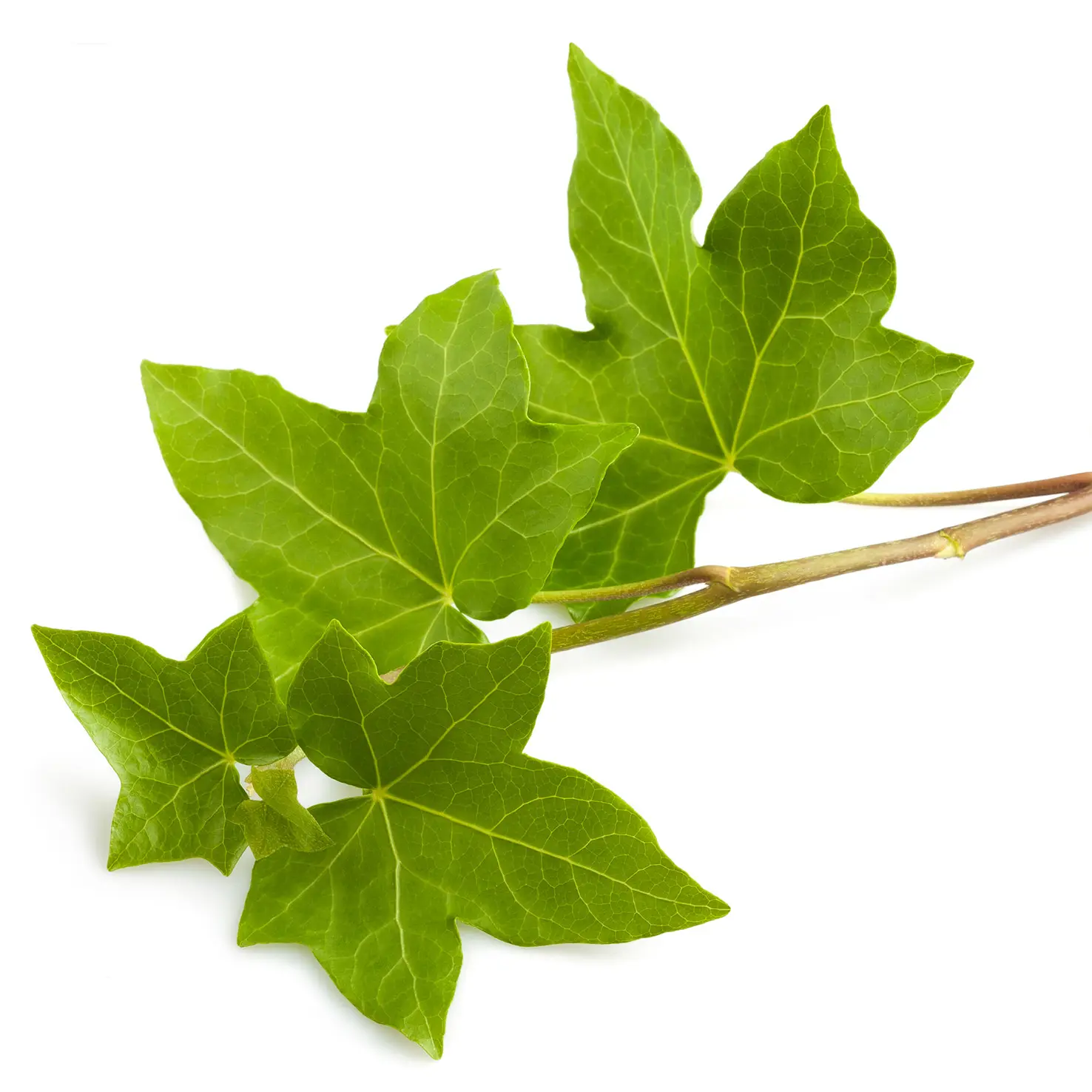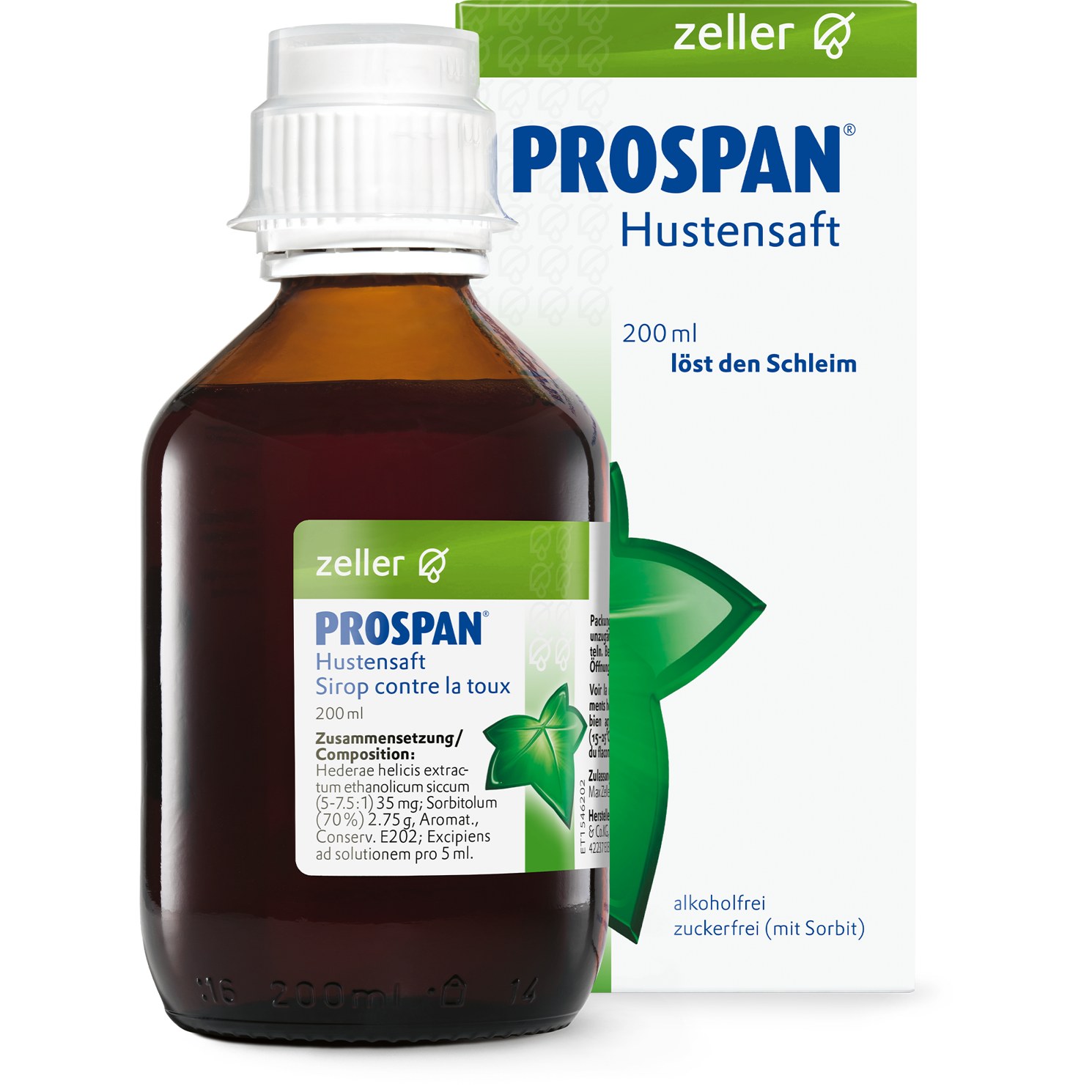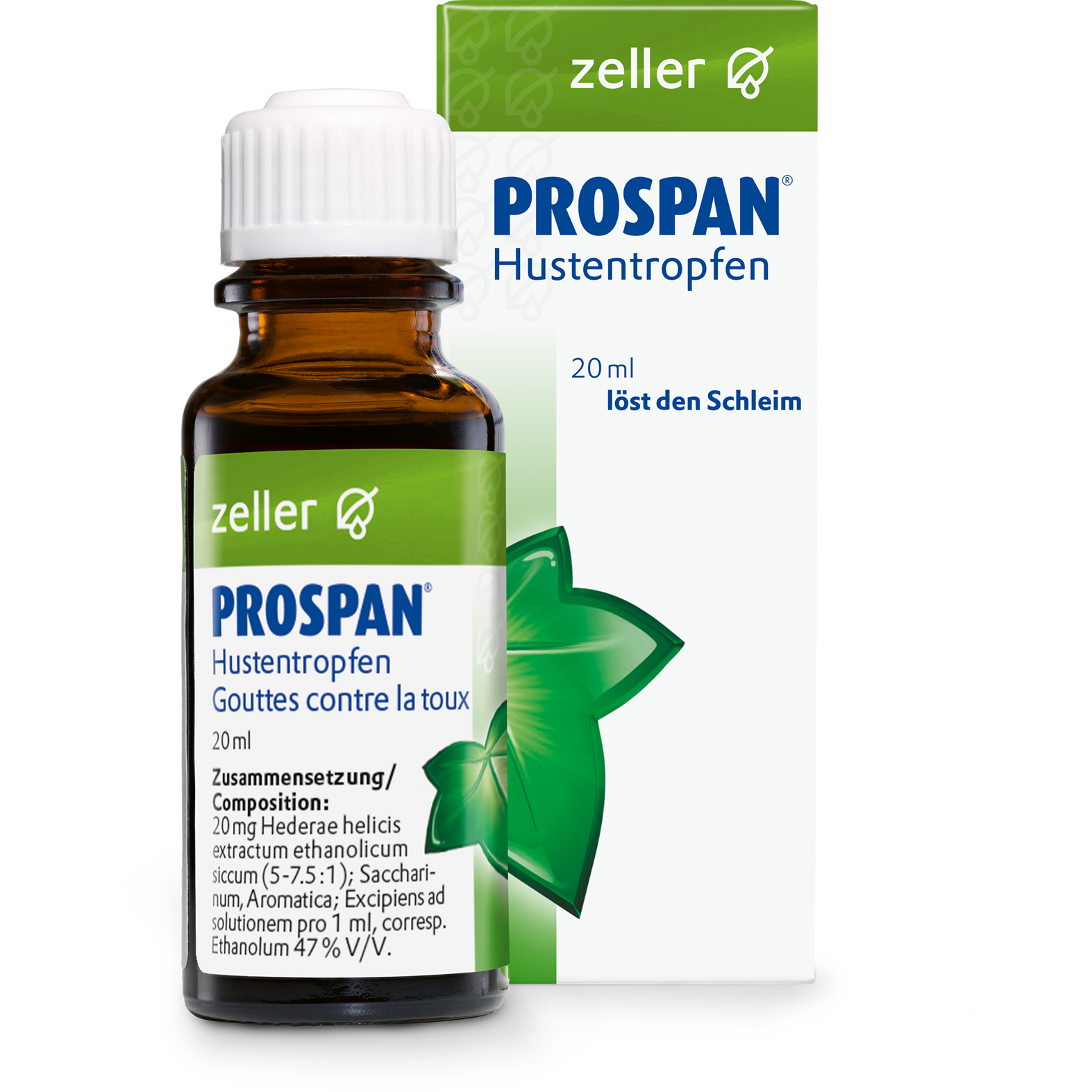
Colds and associated coughs
Annoying and unpleasant colds and associated coughs are usually part and parcel of the cold season. Symptoms include a blocked nose, sore throat and a troublesome cough. Autumn and winter are usually synonymous with the season of colds.
Cough
Coughing is a typical symptom. Although annoying and persistent, it is also an important and protective reflex designed to help you clear the airways. Coughing helps to remove dirt and pathogens from the airways at high speed.
A cough associated with a cold can be caused by a number of conditions. One of the most common causes is a viral infection – the common cold. When we are in close contact with people who have a cold, particularly in crowded public transportation, schools and at the workplace, it is difficult to avoid catching a cold virus. The viruses enter the bronchial tubes via the airways. They then infect healthy cells and proliferate, and they may cause colds and associated coughs. An intact immune system will fight off viruses. But particularly during the cold season, our immune system can be weakened by exposure to cold draughts, damp clothes and cold feet – the perfect breeding ground for viruses and coughs associated with colds.
The respiratory system and its function
The respiratory system consists of the nose, mouth, windpipe, bronchial tubes and lungs – this is the path that air travels as it is inhaled.
The inhaled air is warmed and moistened as it passes through the nose and is filtered roughly by the tiny hairs of the nasal mucosa.
The air then enters the bronchial tubes via the windpipe. The windpipe and the bronchial tubes also have numerous tiny hairs called cilia.
The cilia help to remove inhaled particles from the airways. Inhaled foreign particles and bacteria are deposited on the mucous layer of the upper airways. The mucus is constantly moved towards the mouth by the rhythmic motion of the cilia and then swallowed.
The bronchial tubes connect the windpipe to the lungs. At the end of the windpipe, the bronchial tubes divide and subdivide, forming a fine tube system with multiple, tree-like branches, with the finest branches then dividing into tiny air sacs.
The lungs consist of an estimated 300 million of these tiny air sacs, which are called alveoli. They are responsible for the exchange of oxygen and the carbon dioxide generated by breathing.
Coughs associated with colds
If the immune system is not able to fend off the viruses, you may develop a cold and a cough. A cough associated with a cold develops over three stages: It starts out with a dry tickly cough, which usually lasts two to three days. In the next stage, there is coughing with discharge or increased mucus production in the bronchial tubes. In stage 3, the dry cough returns until all cough symptoms have gone completely.
Herbal remedies for coughs associated with colds
Nature provides various plants for the treatment of coughs associated with colds.
Ivy is a medicinal plant that has been familiar since antiquity. It has a long history of use for relieving coughs. Ivy leaf extract helps to thin and loosen mucus build-up on the bronchial tubes and relieves coughs caused by excess mucus. The mucus dissolves and is expelled from the bronchial tubes through coughing. Thanks to the relaxing effect on the bronchial tubes, the congested airways open up and this makes breathing easier.
Thyme and primrose have traditionally been used to treat symptoms of acute bronchitis; the effects include helping to liquefy mucus as well as antibacterial properties. Iceland moss has a cough-relieving effect due to its mucilage components that form a protective film over the irritated mucous membranes in the mouth and throat.
Herbal remedies for colds
Echinacea, thuja and indigo are used in acute colds and to boost the immune system in times when the body is more vulnerable to colds. They activate the body’s defence mechanism.
Synthetic remedies for coughs associated with colds
Synthetic antitussives are medications that suppress the cough reflex by blocking the activity of the cough centre in the brain. Frequently used substances include codeine and dextromethorphan. Synthetic mucolytics and expectorants are medicines that liquefy and loosen thick, viscous mucus. This helps with expectoration and discharge of mucus.
When you should see your doctor
We recommend that you see your doctor if you suffer from acute bouts of coughing and a high fever as well as yellowish viscous mucus, a dry tickly cough that lasts for more than 2-3 weeks or if you get pain or crackling or high-pitched sounds when breathing. We also recommend seeing a doctor in cases of suspected chronic bronchitis with more than 5 periods of coughing over the last 24 months and with severe shortness of breath on exertion.
Tips for colds and coughs associated with colds
- A warm relaxing bath is not only soothing but will also improve blood circulation and in turn boost the immune system. Adding essential oils will also stimulate blood circulation, which means you only need warm water for your bath, which is gentler on the heart and circulatory system. Inhaling essential oils while having your bath also has an antispasmodic and antibacterial effect on the airways.
- Inhaling essential oils stimulates mucus production and helps relieve coughing. But inhaling lime blossom can also have a comforting effect, particularly for coughs associated with colds with thick, persistent mucus and dry airways. For a productive cough with liquid mucus, chamomile is recommended.
Warm compresses with thyme, quark or lemon can help soothe irritated airways in the event of a persistent dry cough. Chest compresses with potatoes or onions are also very effective, particularly for children, and as they are warm, they are also very comforting. - Coughs associated with colds and the associated symptoms such as an increased temperature and a runny nose can be exhausting for the body. Make sure that you get enough rest and sleep.
- You should also drink plenty of fluids, preferably herbal teas for coughs or chest colds, as their composition can help alleviate your cough




